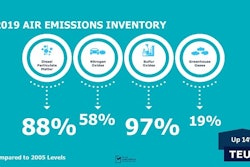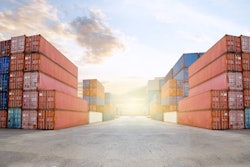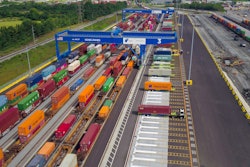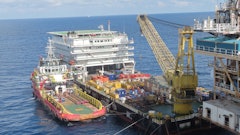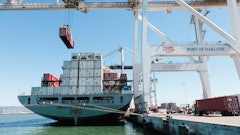
The cold chain for food and beverage, like many other industries, is having to adapt to significant changes in supply, limited capacity and high expectations from customers. Across the United States, several meat processing facilities have had to close down for a period due to outbreaks of the Coronavirus disease (COVID-19) amongst employees, making supply difficult to predict, as demand for pork continues to stay high. In addition, blank sailings have hit record levels. This means cold chain leaders can no longer depend on their cargo being exported on time or even being notified by ocean carriers that their cargo’s shipment was delayed.
On top of these challenges, the cold chain is generally complex, and transporting perishables requires that their temperature remain within a small range throughout their entire journey. In order to address these issues, industry leaders can begin by tackling a commonly problematic area within the cold chain — lack of visibility and challenges that arise by transportation from ports and ocean carriers. By incorporating supply chain visibility technology into the cold chain, leaders can drive greater efficiency, increase customer satisfaction and reduce costs brought on by food waste.
Visibility within ports
With a rise in blank sailings, it has been difficult to even transport perishables, as capacity is extremely limited and sailing schedules are inconsistent. In the world of perishables, this is significant, as delays in shipping can result in a shorter shelf life for products.
Traditionally, within ports, it has also been difficult to track when containers are ready for pickup, whether they have cleared customs and to ensure that temperatures stay within a specific range to prevent perishables from spoiling before reaching their final destination. Furthermore, even once perishables arrive at ports, congestion can lead to greater delays to pick up the containers, which could shorten shelf life further or lead to food spoiling.
Cold chain challenges for perishables shipped over the ocean
Most perishables are transported by reefers, which also tend to be the source of many challenges for the cold chain. Reefers need to be connected to a power source on the ocean carrier and within ports in order to keep perishables cool. In utilizing reefers, it can be difficult to determine the quality of the cargo as it goes across the ocean and arrives at the port.
For instance, while on route for 15-20 days or longer, the reefer can become unplugged due to turbulency or other unexpected issues. Depending upon how long the temperature stays out of tolerance, the cargo could either spoil or have a shorter shelf life.
To address cold chain challenges within ports and ocean carriers, industry leaders can invest in technology that will give them greater visibility into their cold chain, enabling them to take action and make better business decisions.
The need for supply chain visibility in the cold chain
Supply chain visibility has become a necessity in any organization that needs to transport cargo, especially for the cold chain. Visibility within ports is particularly valuable for the cold chain, as blank sailings and inconsistent schedules have made it hard to know whether your cargo was shipped when expected.
By gaining visibility into the container’s status and availability, as well as the sailing schedules, cold chain industry leaders are enabled to improve planning and execution and leverage this data for coordinating pick-up and drop-off appointments and predicting ETAs for all shipment legs. In addition, by having visibility into whether the port is congested, leaders can automatically schedule container pick-up times, which are optimized for both the marine terminal and motor carrier, ensuring that perishables are picked up and delivered before they spoil.
Moreover, supply chain technology can give cold industry leaders the ability to monitor the conditions that their goods are transported or stored in. This type of technology relies on Internet of Things (IoT) sensors to monitor environmental factors and provide regular updates. Examples of this type of monitoring include:
- Temperature monitoring for cold storage and transport of products like agricultural goods or certain pharmaceuticals.
- Atmospheric monitoring to detect changes in atmospheric composition, humidity or other factors.
- Other types of sensors for radiation, pollutants or other factors.
Typically, these types of monitoring devices will be paired with software that provides alerts and alarms if thresholds are breached. Due to the important role of IoT sensors, leaders should seriously consider adapting them into their cold chain.
The value of IoT sensors in the cold chain
Investing in IoT sensors is one of the most reliable ways to monitor the temperature within reefers. It is the only way to tell if the temperature of the container fell outside of tolerance and how long it did. The sooner a potential issue is detected, the sooner companies can take action. This gives executives options of attempting to solve the issue while in transportation, make revisions for another source or even to let customers know ahead of time to make alternate plans.
In addition, with IoT sensors, you can send signals over satellite, which may prove useful for tracking important cargo. When considering how to set up sensor technology, it is also important to use a technology platform that interfaces with your sensors, especially if working with multiple vendors to know which container is on which sensor and system.
Though IoT sensors are an important technology, there are several reasons cold chain leaders are hesitant to deploy them. First, though the price point has decreased over the years, they are still a significant financial investment. Additionally, to mount them on all containers is a large investment of time. Lastly, to maintain them also takes a lot of resources as they often break and run out of batteries. Without a good ROI, IoT sensors may not be worth the resources and money.
The cold chain industry is quickly changing and needs to adapt in order to continue to meet the demands of their customers. Incorporating supply chain visibility technology will play a crucial role in ensuring customers are satisfied and demand is met.




